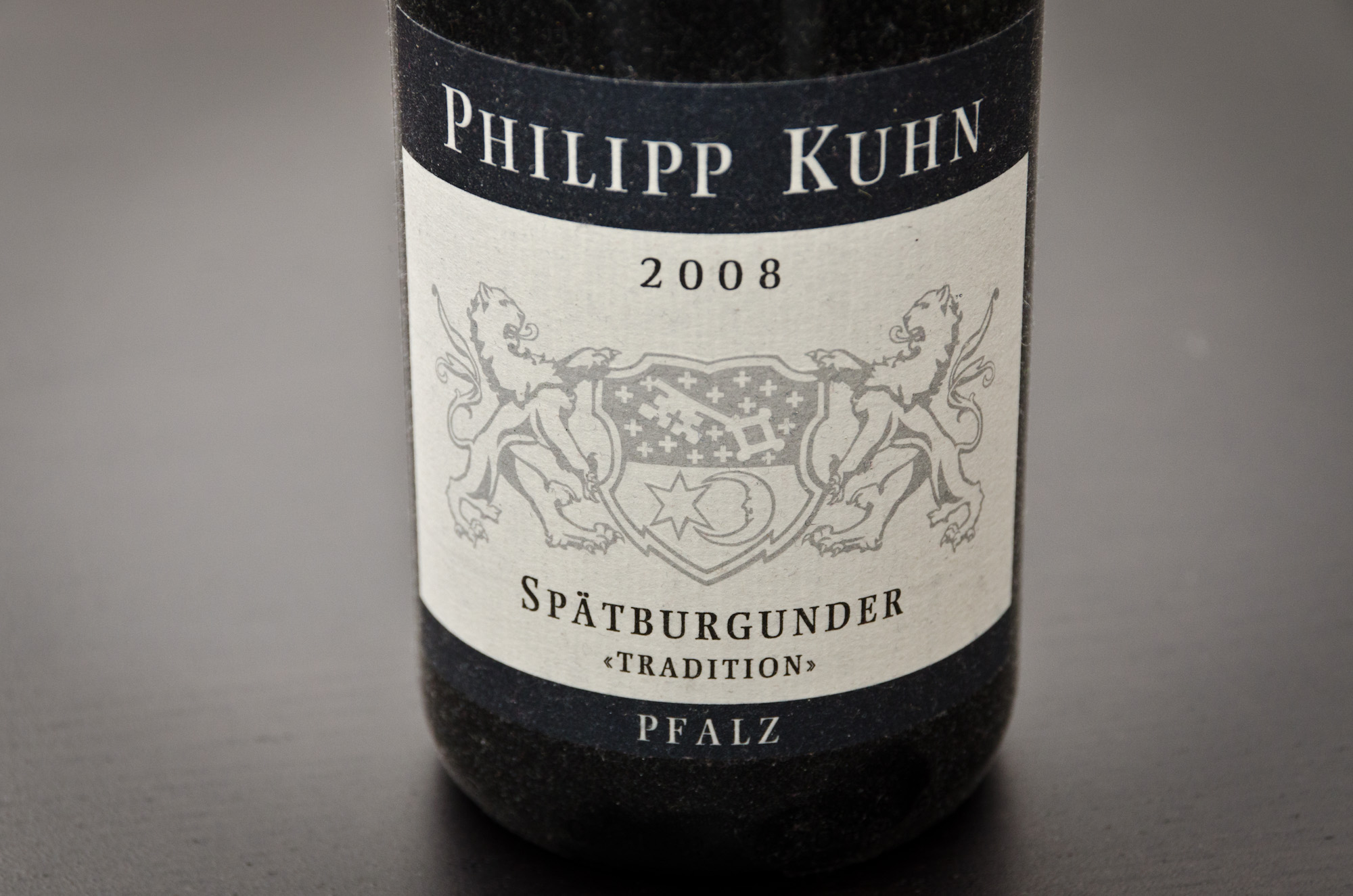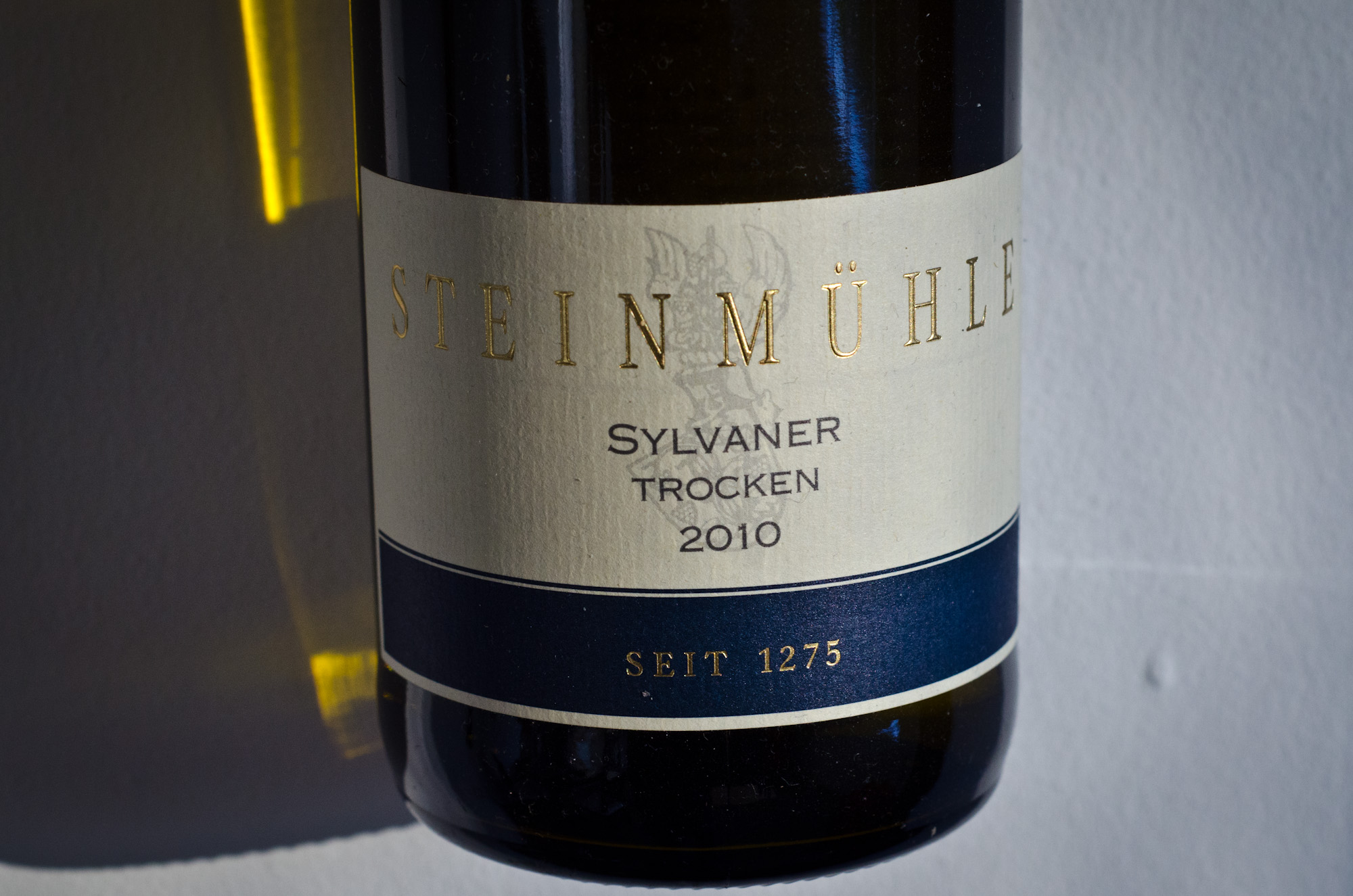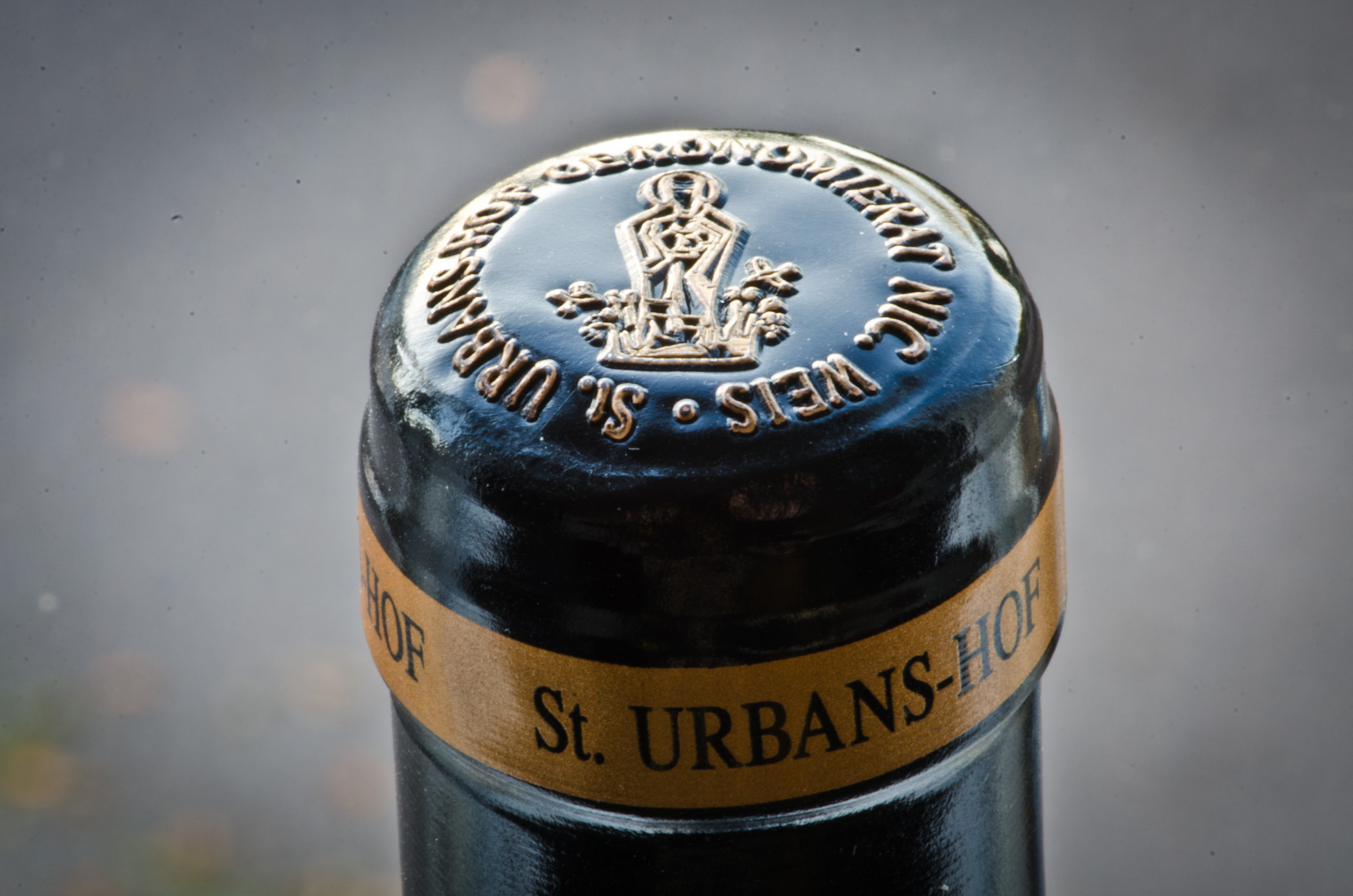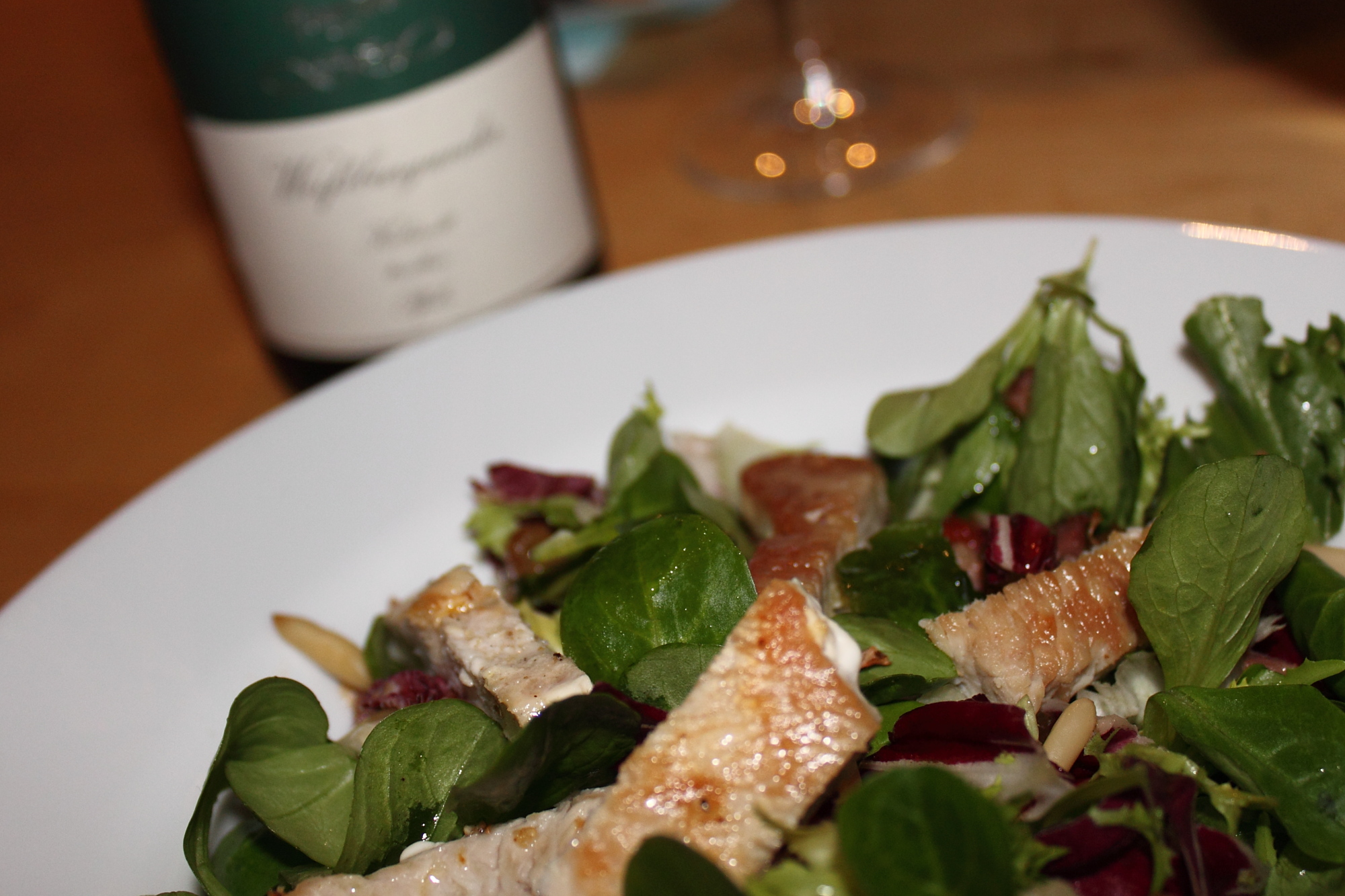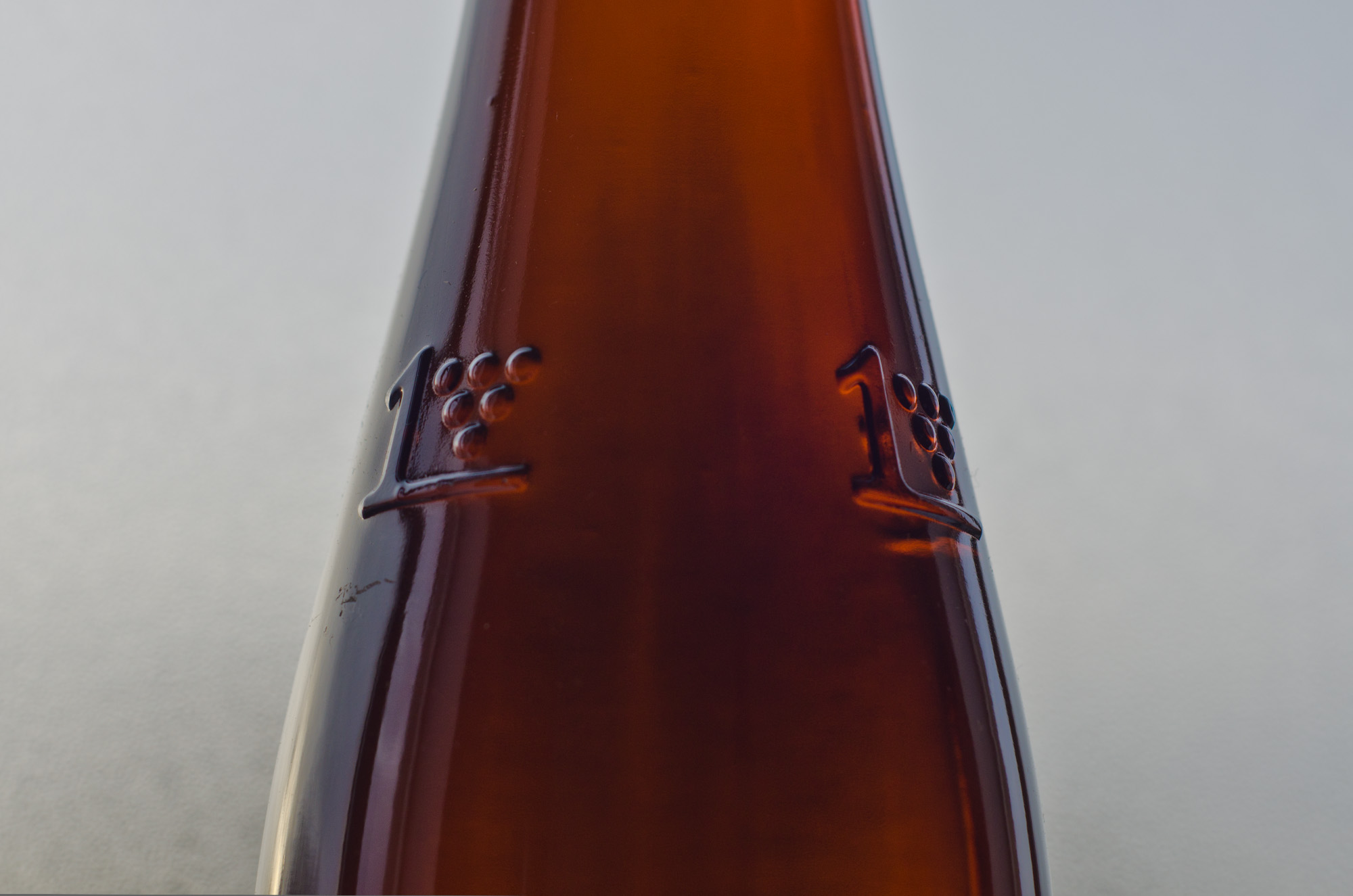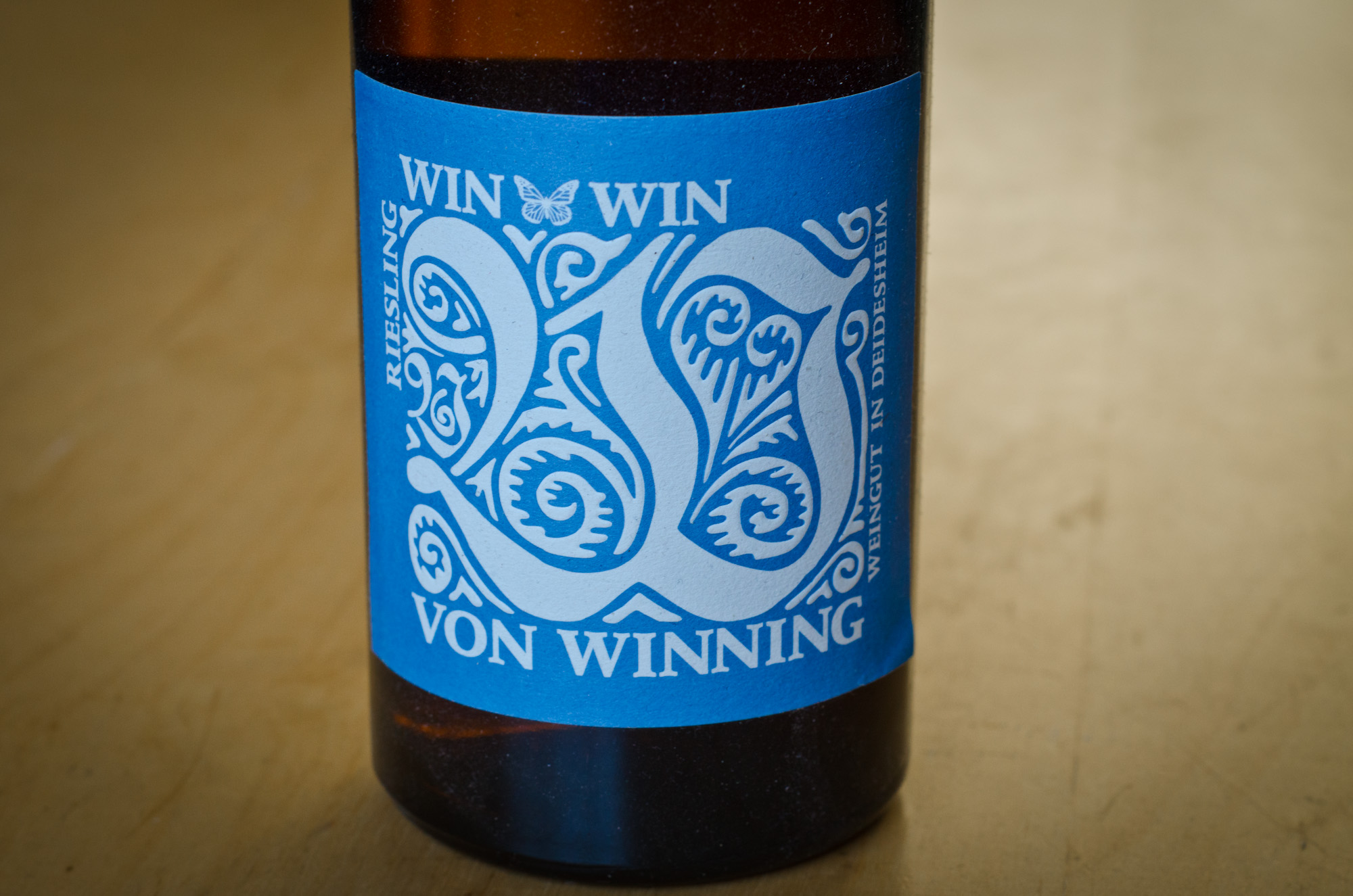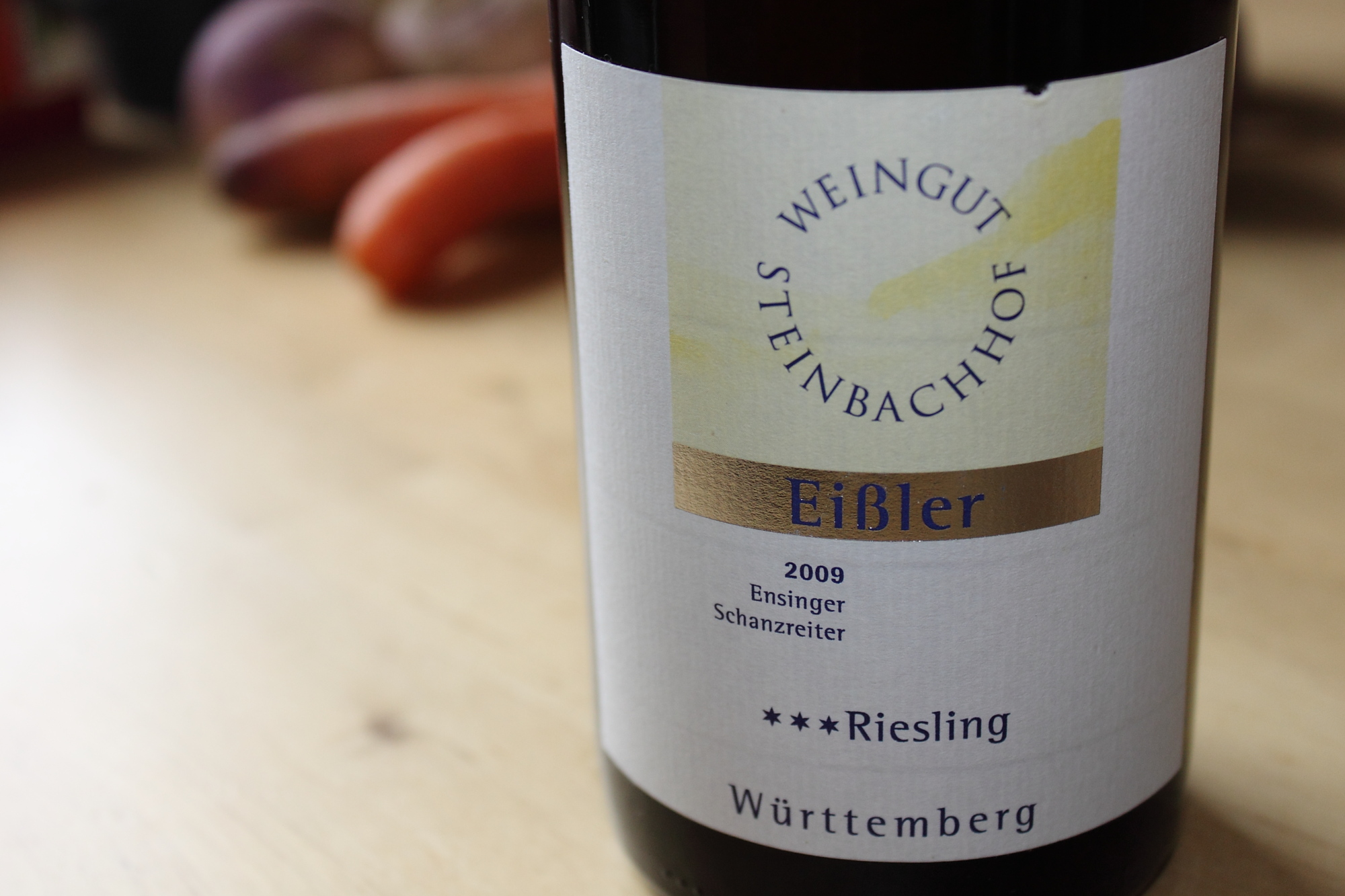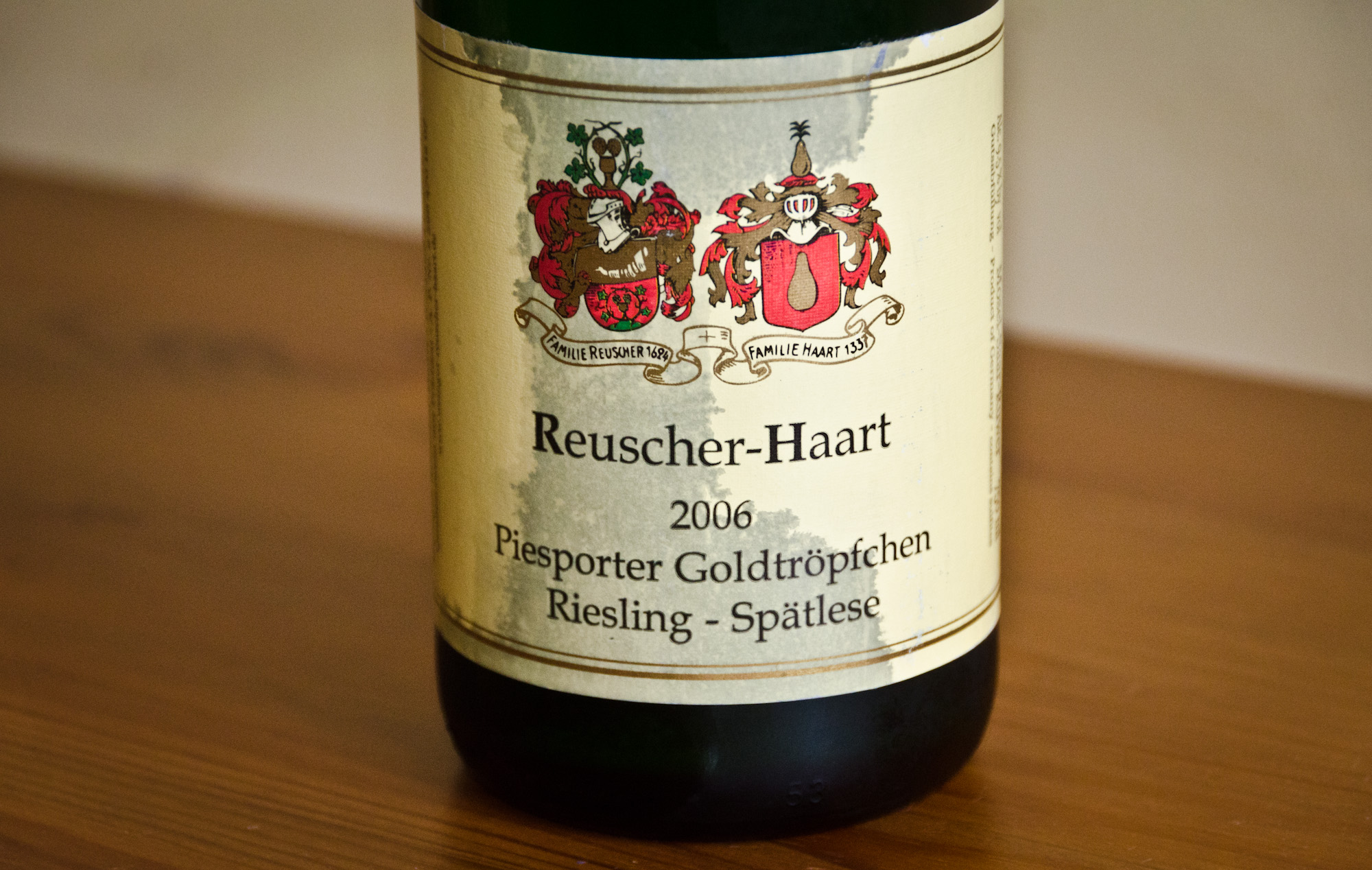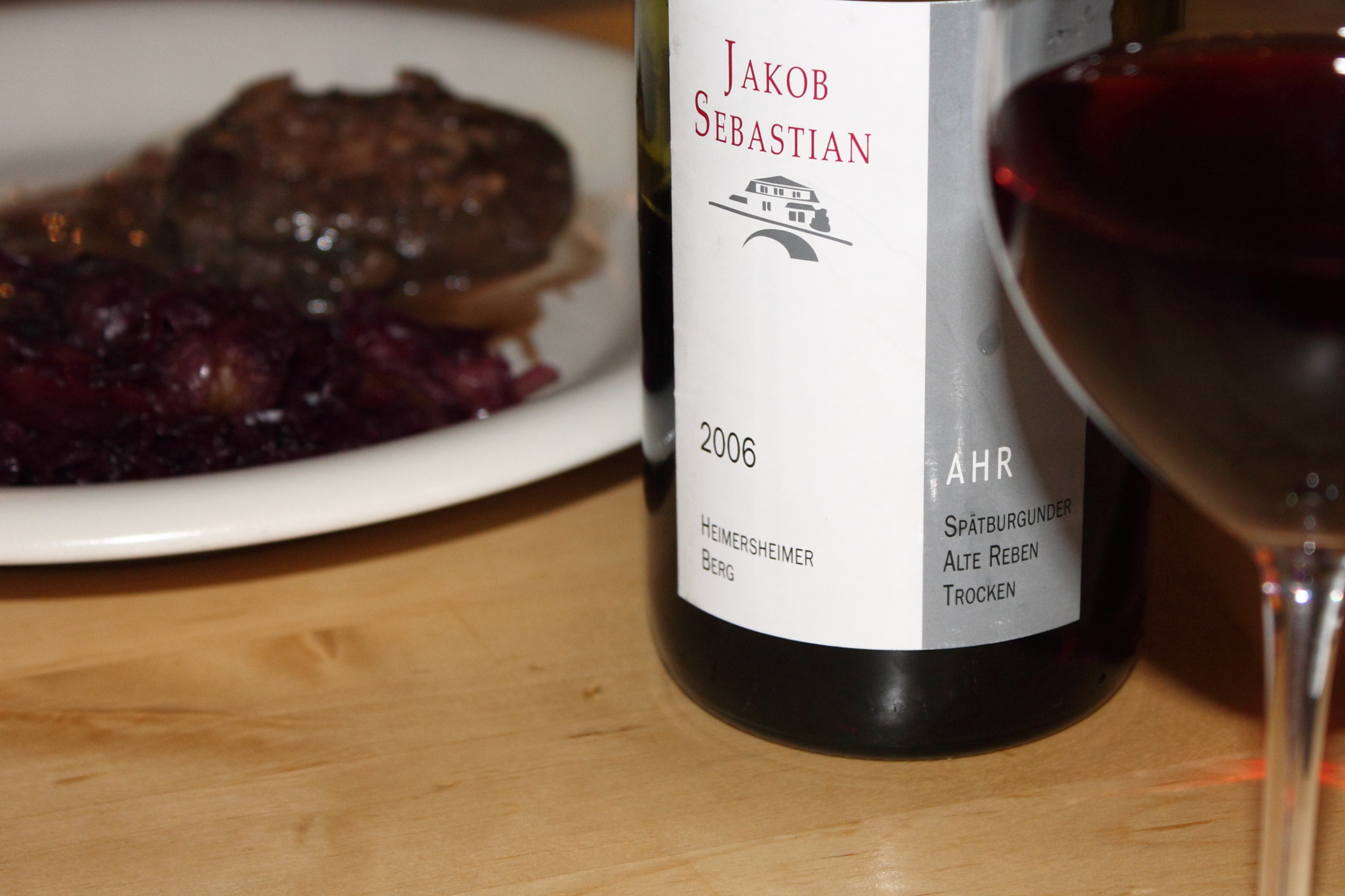Kistenmacher & Hengerer, Heilbronner Wartberg, Gelber Muskateller, Spätlese trocken, 2009
Swabian Muscat, anyone? There's no doubt that solid old Swabia (that's "Württemberg" for you, in wine label terms) can do much: She can do somewhat dubious specialties like Trollinger and Samtrot, harmlessly light regional reds, but then she can also come out with powerful Rieslings and surprisingly high-brow Lembergers and Pinot Noirs. But dry Muscat, that feathery-light, elderflower whiff of springtime? Let's just say it takes a certain leap of faith. To be honest, if this offering had not come from Kistenmacher & Hengerer, an up-and-coming winery that has recently impressed us with the seriousness of their old-vines Lemberger, we might not have given it a chance either.

Have they actually pulled it off?

